Final Parking Space: 2011 Ford Crown Victoria Police Interceptor
For what seemed like generations (but was really just 20 model years), the Ford Motor Company sold a Police Interceptor version of the Crown Victoria sedan. The final Crown Victoria was built in September of 2011, and today’s Final Parking Space subject was built in August of that year. That’s history!
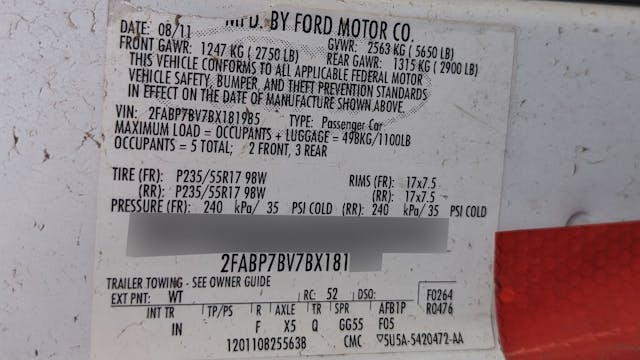
Most sources seem to indicate that the very last Crown Victoria Police Interceptor rolled off the St. Thomas assembly line in August of 2011, so this car is one of the final handful built. Sharp-eyed readers may note that the PI’s characteristic “P71” sequence is lacking from the VIN here, but that’s just because Ford changed the code to “P7B” for the last two model years.
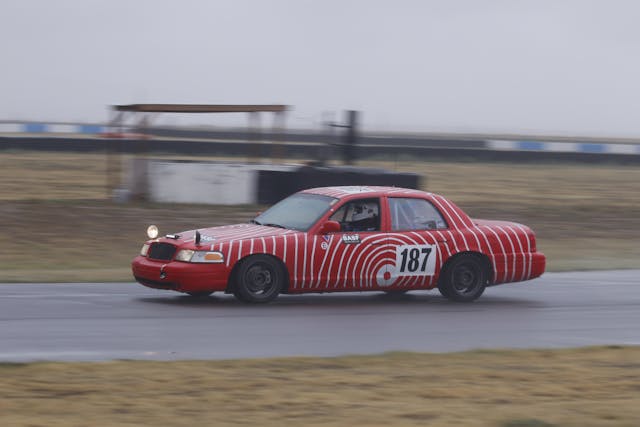
I have spent many years looking in car graveyards and elsewhere for a P7B Crown Vic built during the summer of 2011; prior to now, the newest example I’d found was this 24 Hours of Lemons race car in Colorado with a May 2011 build date.

Last year, I ran across this 2011 P7B in Denver with a January 2011 build date, which seemed impressive at the time. Locating an example of such an important vehicle from the final month of production is the kind of thing we junkyard historians shoot for.
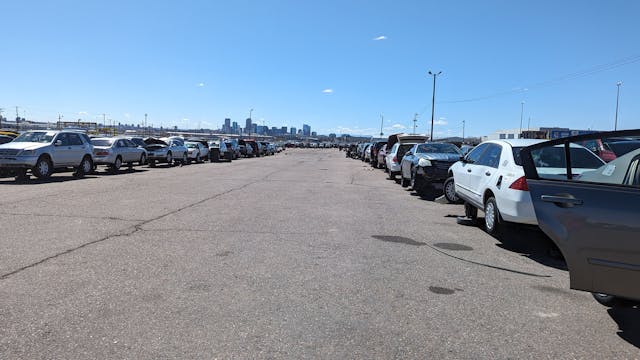
I found this car on Opening Day at LKQ Pick Your Part’s brand-new Denver yard, when all the inventory was at its freshest.
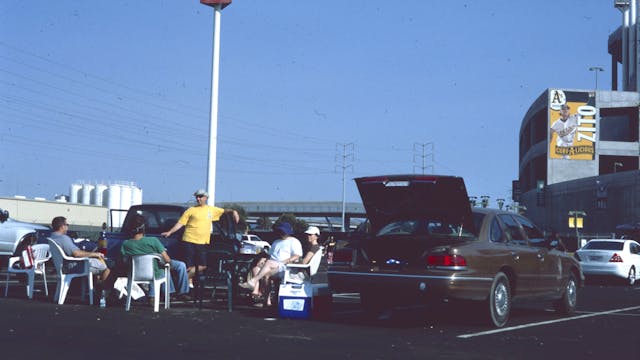
I have a soft spot for the P71/P7B Crown Victoria, because I had one as a daily driver for the second half of the 2000s. In 2004, I bought a 1997 P71 that had been a San Joaquin County (California) parole officer’s unmarked car. No arrestees had ever leaked bodily fluids in the back seat (a problem with ex-police cars driven on patrol for years) and there were no spotlight holes in the A pillars. I put tens of thousands of miles on that car and enjoyed its excellent handling and powerful air conditioning.

It even came with a bunch of evidence Polaroids and urine test kits in the trunk. I wonder what the perp in that red Toyota MR2 did.
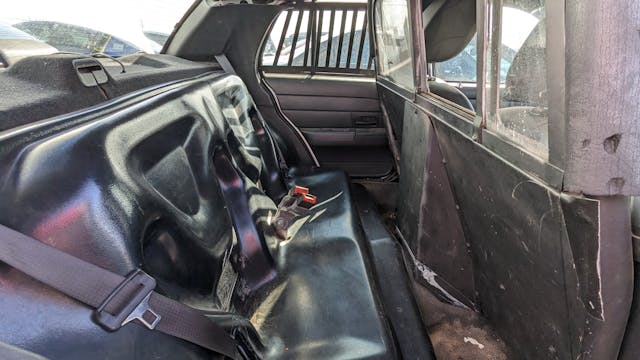
This car is the only ex-police car I’ve ever found in a junkyard that still had the pee-proof fiberglass back seat and protective screen in place; normally, police departments remove them to use in their other cars, but the remaining Crown Vic Police Interceptors are nearly gone and whatever agency owned this car must have decided it wasn’t worth the hassle to salvage this stuff before disposing of it.
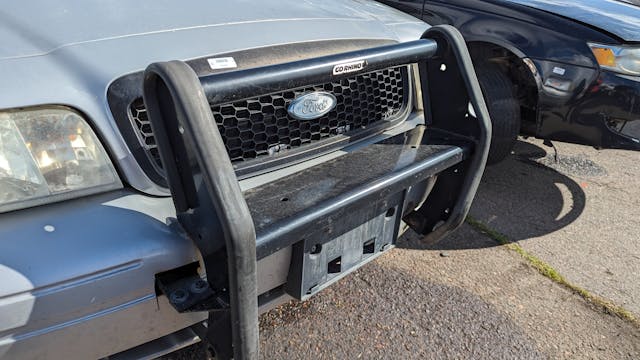
The push bumper is still here, too.
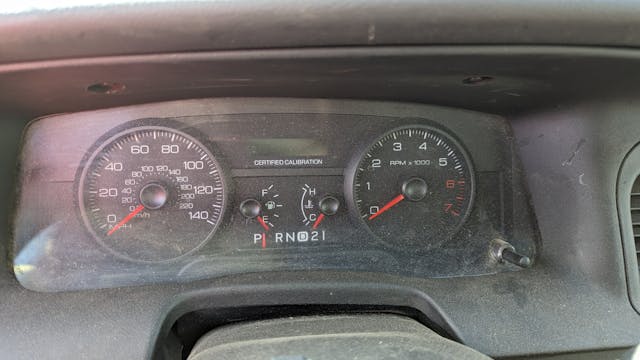
The electronic odometer means I couldn’t check the final mileage total without powering up the car’s ECU. Most discarded P71s with mechanical odometers that I’ve found have had between 100,000 and 200,000 miles showing, though I have spotted one ’02 P71 that worked as a taxi after its law-enforcement duties were done and racked up better than 400,000 miles during its career.
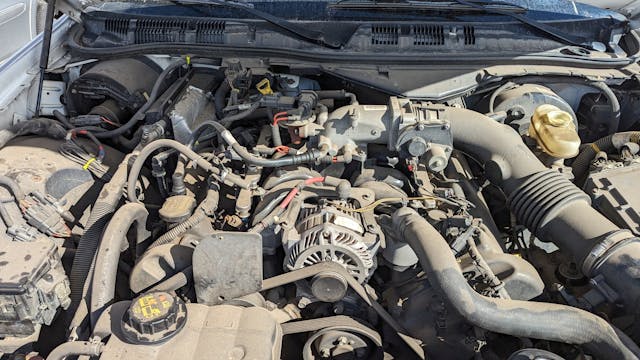
All of the 1992-2011 Crown Victoria Police Interceptors got the 4.6 Modular SOHC V8 engine under their hoods. This one was rated at 250 horsepower and 297 pound-feet; since the car scaled in at just over two tons, it wasn’t especially quick off the line.
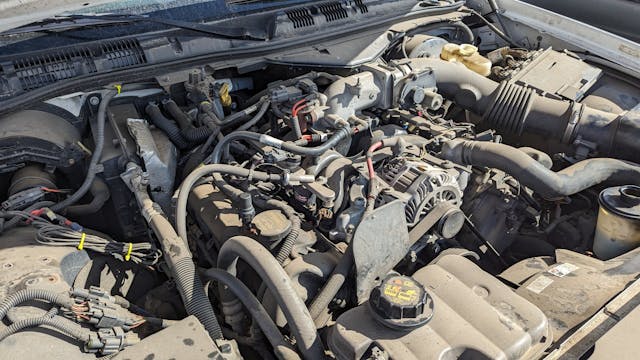
While the P71/P7B wasn’t particularly quick, it was equipped with an extra-heavy-duty cooling system that could keep the engine alive under far more punitive conditions that ordinary civilian cars ever experience. Idling for hours with the A/C blasting in Phoenix in August? No problem!

On top of that, these cars can achieve real-world highway fuel economy approaching 25 miles per gallon.
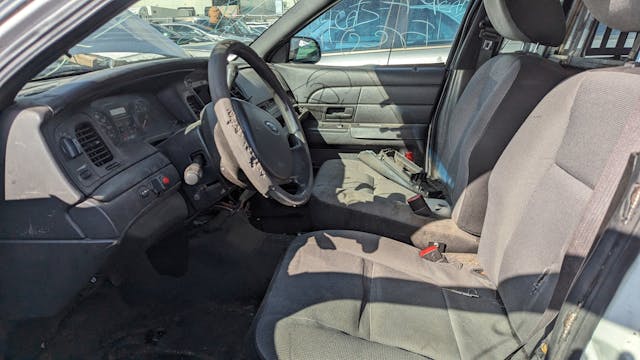
The cop suspension, cop tires, and cop shocks made the ride a bit firmer than what Grandma got in her floating-on-a-cloud Crown Victoria LX, but they also gave the Police Interceptor impressively nimble handling for a car this size.
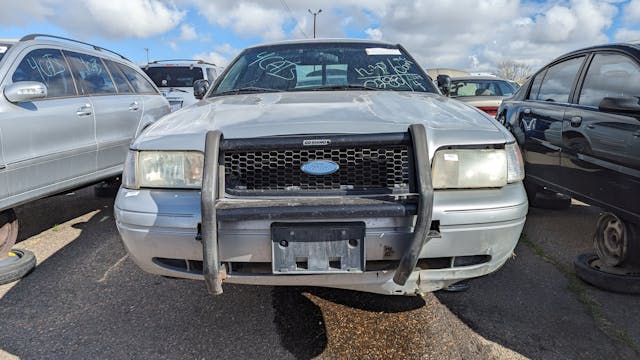
This car, along with its Mercury Grand Marquis and Lincoln Town Car siblings, was one of the last built on Ford’s versatile Panther platform. The first Panthers were 1979 models, so Ford certainly got its money’s worth out of that chassis design.
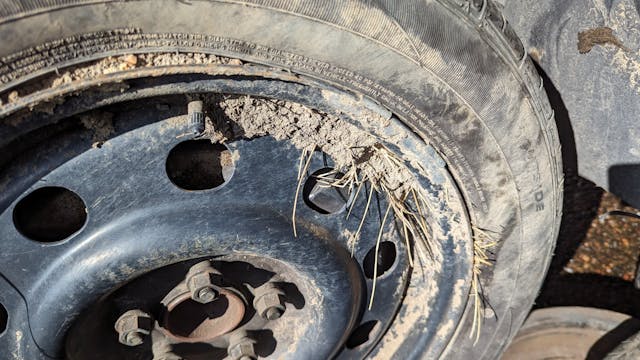
At some point near the end, this car slid into dirt hard enough to embed vegetation and soil between the tire bead and the wheel. Perhaps there was sufficient suspension damage to make its final owner give up on it.
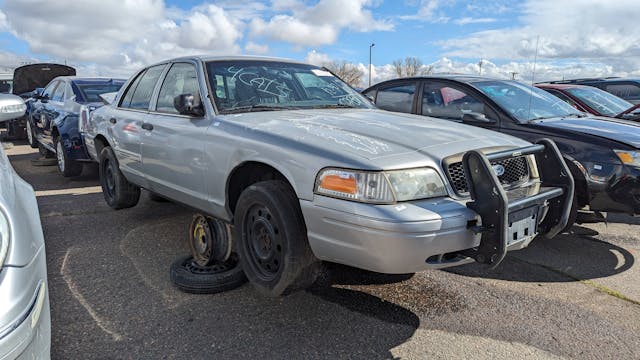

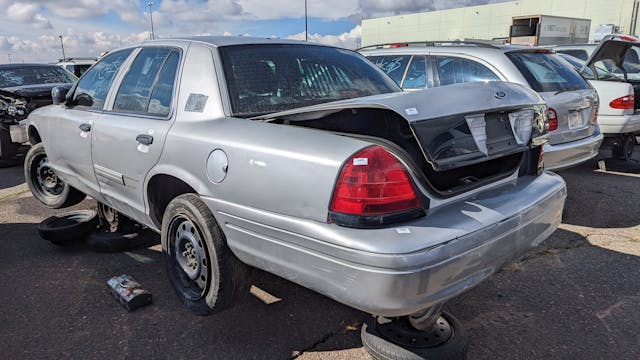







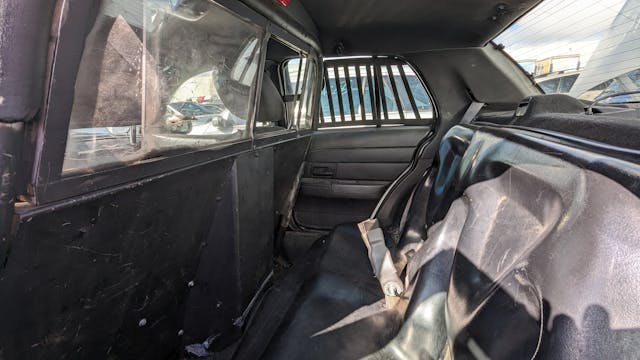


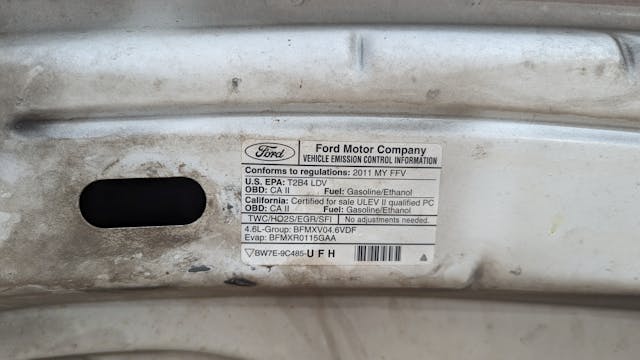

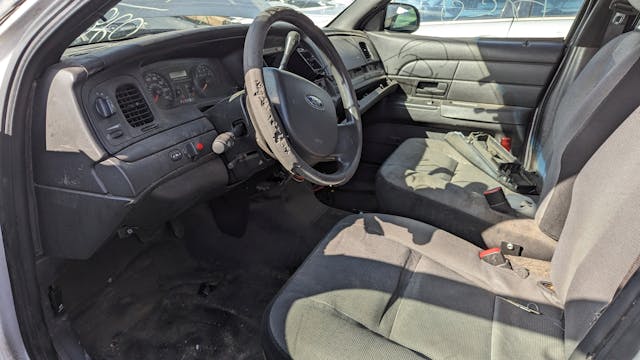




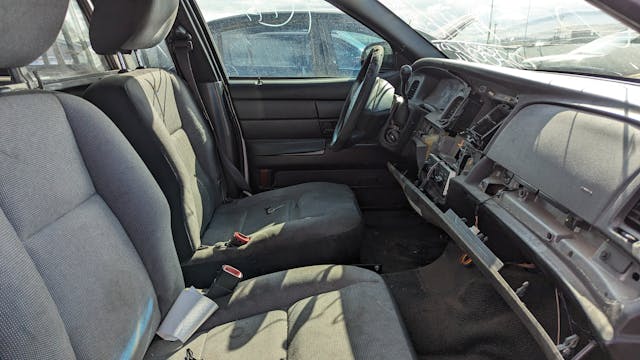







***
Check out the Hagerty Media homepage so you don’t miss a single story, or better yet, bookmark it. To get our best stories delivered right to your inbox, subscribe to our newsletters.
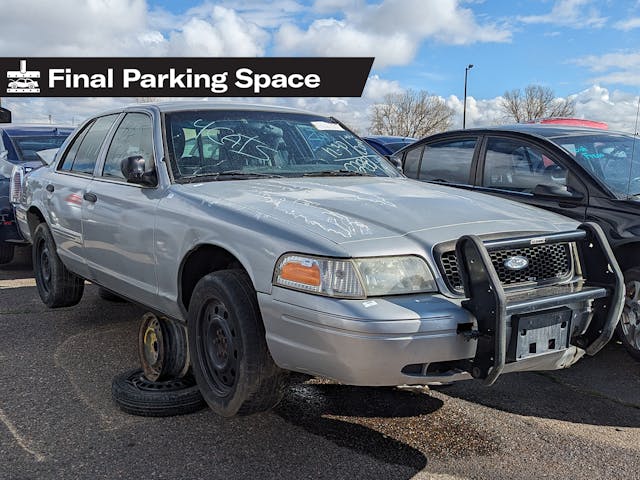


Marilee, these were the car of choice for all the NVA police departments, Fairfax, Arlington, Loudon. Culpepper Counties went through hundreds of these. after their service life they became the go to car for the independent Taxi drivers in the DMV. And you are correct, when the Explorer became the default police cruiser the departments started leaving the push bumpers on the cars when they went to auction. You would see Taxis with them. Miss seeing those cars because they were so easy to differentiate in your review mirror.
It’s especially hard to differentiate the SUV cruisers when they have the sneaky black decals on black paint and no light bars. There’s a couple departments here in N Texas that spec them that way, and unless you happen to see the spotlight or notice the black push bar against the black front end, you miss it.
My go to is the roof rack, all cars sold to the public have the bars running the length of the car, no cop ones do, even undercover to make room for the light bar setup
You think that’s hard to spot…a local agency has a Tesla Model 3 done with ghost graphics…no push bar either. “Yes Officer, I did roll that stop sign. No Officer, I didn’t see you sitting right there.”
Front clip will end up under a 60s-70s F100…
Tire bead may have been broken and filled with dirt being pushed around wrecking yard lot (prior to this nice asphalt one), or by person that made the choice to scrap it.
Push bar and other front end damage is hard to decipher from the pictures, almost looks like it drove up onto something and the bumper got caught resulting in the pull in the opposite direction.
Where I live most of these did hard miles for years after as taxis. The newer-gen cop spec cars (mostly Chargers) are really pricey for the pitfalls of the concept of being the civilian owner after.
I have bought and (eventually) driven cars less intact than some of these examples I see in boneyards
I’m on my second CV- my ’09 P71 was hit hard in the rear while parked, and totaled. I replaced it with an ’11 P7B.
Great road cars, very robust and serviceable. Highway mileage is 22-23mpg. Still a bargain, if you can find a decent detective car, and it has low engine idle hours. My ’09 had 178k when hit, and it was running very well. Actually, still is; I bought it from the insurance company and kept it for parts.
The odometer readings I find in the wrecking yard from former PD taxis is in the 300-500k bracket.
I still miss these things just because Mustang parts are easy upgrades for this car.
I have a soft spot for these as well – occasionally I’ll find some that still have the silicone radiator hoses on them. The late ’80s/early ’90s ones (prior gen) with the carbureted 351Ws in them were always a neat find with all the extra coolers up front and the “certified calibration” 140 mph sweep speedos.
I’d love to have one in the fleet someday.
I have a 2011 P7B Crown Vic Police Interceptor. It is a very clean daily driver, black and white, spot light, antennas, cop center console, and a Go Rhino push bar similar to the one in the photo. Great car overall. I get a lot of positive comments about it. Car has 170K miles and way too many engine hours.
The Ford “Panther” platform is probably one of the best they ever produced, and with body on frame construction design, a pretty tough customer. Obviously, if you gravitate towards old school rear wheel drive, there are still quite a few around, but finding a little old lady from Pasadena car is what you really want, which is why I personally own a ’04 Town Car, just that it was a lot less likely to have been abused as opposed to an old troop car. Like all vehicles, they are not perfect, but parts availability is still pretty good, and the old V8 Ford is still getting 22 mpg, with no oil burning @180K. Find a nice rust free, low mile Grand Marquis for less than 10 grand, and sail down the highway of life for the next 10 years and leave the 3 cylinder ecocrap at the dealer!